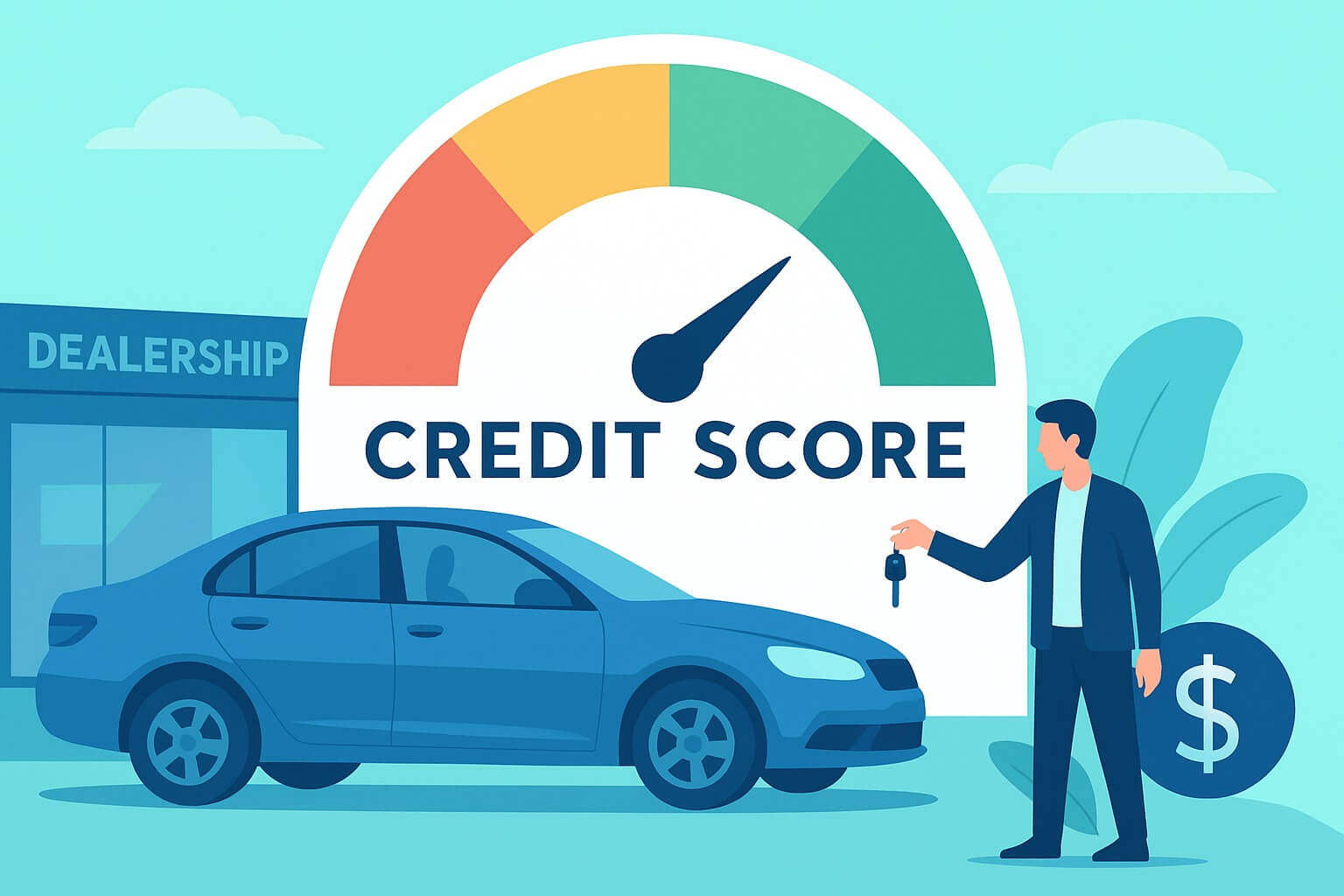Buying a car is exciting — but if you have bad credit, the process can feel intimidating. Lenders often charge higher interest rates, require bigger down payments, or limit your options.
But here’s the good news: you can still buy a car with bad credit without falling into a financial trap. By following a smart strategy, you’ll improve your approval odds, lower your costs, and avoid paying thousands in unnecessary interest.
This article will walk you through 7 proven steps to buy a car with bad credit while avoiding high interest rates.
⚠️ Disclaimer: This article is for educational purposes only. Always consult certified financial advisors, credit counselors, or official lender resources before making financial decisions. Our website does not provide direct financial or legal advice.
Step 1: Know Your Credit Score Before You Shop
Before walking into a dealership, you need to know where you stand.
- Request a free credit report from AnnualCreditReport.com.
- Check your FICO® score or VantageScore®.
- Understand your category:
- 300–579: Poor
- 580–669: Fair
- 670–739: Good
- 740+: Excellent
Why it matters: If you don’t know your credit score, you can’t negotiate effectively. A dealer may try to convince you that you only qualify for subprime rates, even if your score says otherwise.
📌 Tip: Some credit unions and apps like Credit Karma or Experian offer free score monitoring.
Step 2: Improve Your Credit Score Before Applying
If your car purchase isn’t urgent, spend 3–6 months improving your credit score. Even a 50-point increase could save you thousands over the life of your loan.
Ways to improve your score quickly:
- Pay down credit card balances below 30% utilization.
- Make all bill payments on time.
- Avoid applying for new credit accounts right before financing.
- Dispute errors on your credit report.
📊 Example:
- A borrower with a 580 score might get a 20% APR on a $20,000 car loan = $10,000+ in interest.
- With a 670 score, the same borrower might qualify for 7% APR, saving over $6,000.
Step 3: Set a Realistic Budget and Stick to It
Don’t let a dealer convince you to stretch beyond your budget. Focus on the total loan cost, not just the monthly payment.
A good rule of thumb:
- Your car payment should not exceed 15% of your monthly take-home pay.
- Add insurance, gas, and maintenance costs to your budget.
💡 Pro tip: Use online calculators to estimate loan payments.
Step 4: Save for a Larger Down Payment
With bad credit, lenders want reassurance. A larger down payment reduces their risk and lowers your interest rate.
Benefits of bigger down payment:
- Improves approval odds.
- Lowers monthly payments.
- Reduces how much interest you’ll pay overall.
Example: On a $20,000 car loan:
- $2,000 down (10%) → higher APR, bigger payment.
- $5,000 down (25%) → lower APR, smaller payment.
Step 5: Shop Around — Don’t Settle for Dealer Financing
Many buyers make the mistake of relying only on dealer financing, which often carries steep rates. Instead:
- Compare offers from credit unions, community banks, and online lenders.
- Get preapproved before you visit a dealership.
- Use preapproval as leverage to negotiate better terms.
Step 6: Consider a Co-Signer or Joint Loan
If your credit is weak, having a co-signer with good credit can unlock lower rates.
Pros:
- Access to better interest rates.
- Easier loan approval.
- Builds your credit history if payments are made on time.
Cons:
- Co-signer is equally responsible for missed payments.
- Risk of damaging relationships if payments are late.
Step 7: Choose the Right Car (and Loan Term)
When you have bad credit, it’s tempting to stretch your loan term to make monthly payments smaller. But be careful:
- Longer loans = more interest paid overall.
- A cheaper, reliable used car may save you thousands.
Focus on:
- Vehicles with strong resale value.
- Avoiding “buy-here, pay-here” dealerships with predatory interest.
- Choosing the shortest loan term you can reasonably afford.
Bonus Tips to Avoid High Interest
- Avoid add-ons like extended warranties and GAP insurance unless necessary.
- Refinance your car loan in 12–18 months if your credit improves.
- Track your credit regularly to see improvement.
Conclusion
Buying a car with bad credit doesn’t mean you’re stuck with sky-high interest. By knowing your credit score, preparing in advance, and shopping smart, you can save thousands of dollars and avoid predatory lending traps.
Remember: This guide is for educational purposes. Always verify details with certified experts, lenders, or financial advisors before making a decision.
FAQs (People Also Ask)
1. Can I buy a car with a 500 credit score?
Yes, but expect high interest rates. Consider a larger down payment or a co-signer to improve approval odds.
2. Is it better to buy new or used with bad credit?
A used car is usually smarter, as it costs less overall, making approval easier.
3. How much down payment is required with bad credit?
Typically, 10–20%, but more is always better.
4. Can I refinance my bad credit auto loan later?
Yes — refinancing after your score improves is one of the best ways to reduce interest.
5. Does applying for car loans hurt my credit score?
Yes, but multiple auto loan inquiries within a 14-day window usually count as one inquiry.
Call-to-Action
🚗 Ready to take the next step? Explore more resources on managing credit and protecting yourself from fraud here 👉
If you found this guide useful, share it with friends, leave a comment below, or explore our other articles on credit scores and financial security.
